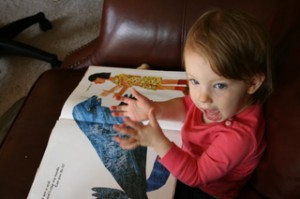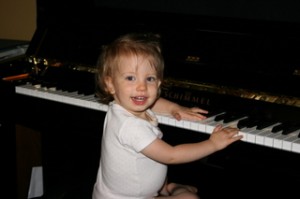
From a young age, children love to learn. They love to explore, imitate and absorb everything that takes place in the world around them. I have been fascinated to study and observe my daughter, Karis. She takes great delight in helping me throughout our daily activities. My passion has always been to cultivate a love for learning in my little ones from the earliest moments. I want them to cherish the joys of exploring, imaging, creating, and delighting in God’s creation and design of how things work and function.
Lately, I have been pondering how can I really cultivate a purposeful learning environment in our home? Yes, I can include her in these activities, but how can I turn these everyday tasks and activities into learning potential. While exploring this world of a child’s brain, I have found some wonderful ideas through friends and resources that I wanted to share with you today. All these activities are appropriate for 2 1/2 – 5 year olds. I have been amazed how young they can begin to learn to help and serve. What important life skills can be learned with plenty of praise and practice. I have learned that you should never underestimate the knowledge and ability of a two year old.
Thus we begin a series of posts sharing ideas for cultivating learning in everyday activities throughout your house.
In the Kitchen
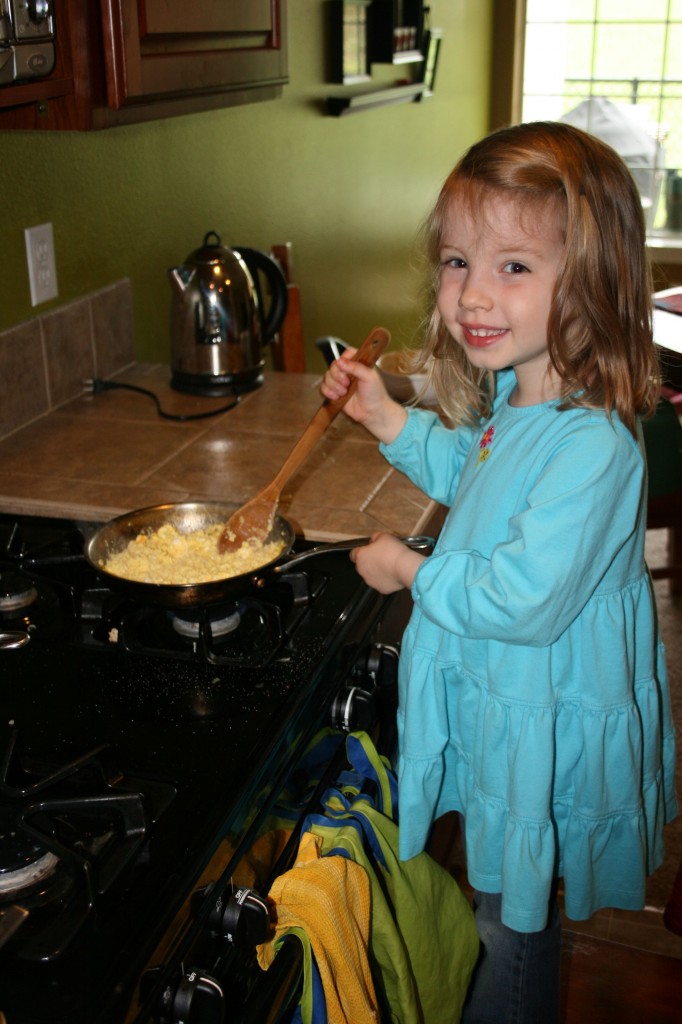 There is much opportunity to teach mathematics and scientific skills in the kitchen while teaching your little ones how to cook and bake. Arrange your kitchen in such a way that the plates, bowls, silverware are at a reachable height for the little one. This will enable them to help uploading the dishwasher and setting the table.
There is much opportunity to teach mathematics and scientific skills in the kitchen while teaching your little ones how to cook and bake. Arrange your kitchen in such a way that the plates, bowls, silverware are at a reachable height for the little one. This will enable them to help uploading the dishwasher and setting the table.
1. Loading the dishwasher - teach sorting of silverware and dishes into categories, matching shapes. Teach how to handle sharp objects.
2. Washing dishes - having a small stool handy will enable your child to help wash dishes. Encourage learning how to carefully handle breakable items which strengthens their concentration. Kids love using soap and wash clothes to clean dishes. Place a towel next to the sink for the child to lay their washed dishes on or guide them in loading immediately.
3. Setting the table - Karis finds great delight in setting the table and learning how to carefully handle carrying plates from the cupboard to the table. Table setting is a opportunity to teach the concepts of left and right and will also appeal to her sensitivity to order. Make a sample placemat with drawings of plate, cup, silverware for a child to use as a model.
4. Cooking & baking together - Karis can pull a chair over to the stove top or counter top and learn how to mix and stir items carefully. Measuring items is a great scientific experiment. With supervision, we stir ingredients on the stove top and observe the different results of hot versus cold, what happens to ingredients when they are heated.
Use glass measuring cups where the calibrations are viewable so a child can learn to measure ingredients themselves. At a older age, we can teach subtraction, by putting too much in and asking them to remove enough to correct it.
Talk about the step by step process of following a recipe. Having a child’s apron and hot pad helps encourage them that they can be involved and a valuable asset to our food preparations.
Michele shares some further ideas:
We have encouraged our daughter Gen (now age three) to help with our regular household tasks since she was very young. Before she was two-years-old, she began helping in the kitchen. It became a great way of teaching her concepts such as “in,” “out,” “in front of,” “behind,” “on top,” and “under.” She also practiced stacking (and making items fit), by learning to recognize size differences. (She owns a set of toy stacking cups, but “helping mama” with the measuring cups was much more fun!) As she has gotten older, we have started identifying numbers and letters. She enjoys looking on the cookbook pages to find letters and numbers that she recognizes.
What ideas can you share for including your children and purposeful learning in the kitchen?
Stay tuned as we discuss learning ideas in the laundry room, bedroom, living room and the great outdoors!
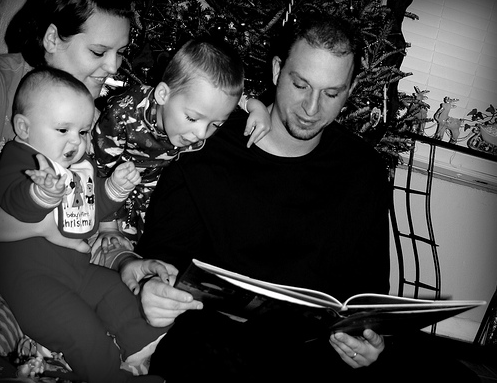


 by Mark Chanski was by far my favorite read from 2009! This book challenged me to really understand the position, domain, and calling God had assigned for me as a women. It was a call to play your position and to play with a win it mentality! Do your work unto the Lord! A must-read for all women, young and old, single or married. Read my full review
by Mark Chanski was by far my favorite read from 2009! This book challenged me to really understand the position, domain, and calling God had assigned for me as a women. It was a call to play your position and to play with a win it mentality! Do your work unto the Lord! A must-read for all women, young and old, single or married. Read my full review 
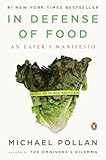 by Michael Poland is my new favorite read on the history and industrialization of food. He gives you all the amazing details as to where most of the standard supermarket food comes from and how you can find the “real” thing. Read my full review
by Michael Poland is my new favorite read on the history and industrialization of food. He gives you all the amazing details as to where most of the standard supermarket food comes from and how you can find the “real” thing. Read my full review 


 by Amanda Soule was such a delightful read in encouraging fun, interactive, creative play as a family. She gives a wealth of ideas for supplying your children with the tools necessary to strengthen imagination. I appreciated the focus on building relationships – the most important thing. Read my full review
by Amanda Soule was such a delightful read in encouraging fun, interactive, creative play as a family. She gives a wealth of ideas for supplying your children with the tools necessary to strengthen imagination. I appreciated the focus on building relationships – the most important thing. Read my full review 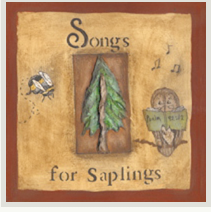
 Steve Green’s
Steve Green’s 
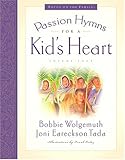 beauty of hymns. Hymns are packed full of solid gospel truth and are such a tool to be used in teaching your children the Word of God. Each book in this series includes a story about the history behind each hymn, lyrics, verses to be discussed and prayers. We recently purchased the
beauty of hymns. Hymns are packed full of solid gospel truth and are such a tool to be used in teaching your children the Word of God. Each book in this series includes a story about the history behind each hymn, lyrics, verses to be discussed and prayers. We recently purchased the 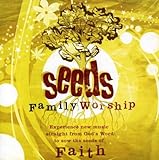 Seeds Family Worship
Seeds Family Worship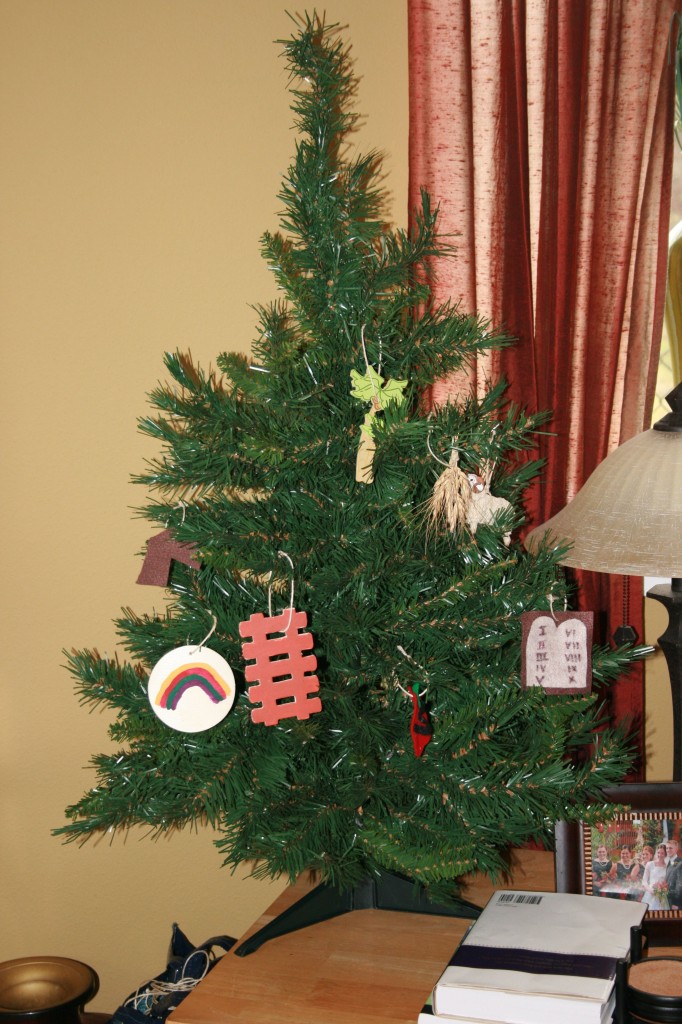 Last year, I was introduced to the idea of a Jesse Tree as a purposeful way to celebrate the true meaning of Christmas and our family loves it!
Last year, I was introduced to the idea of a Jesse Tree as a purposeful way to celebrate the true meaning of Christmas and our family loves it!

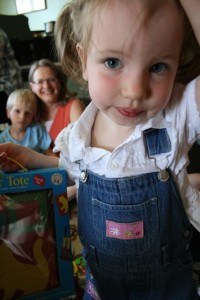 One of my projects lately has been to map out a plan for spending some more purposeful learning time with Karis this summer and into the fall. My goal is to spend 1 hour each morning, from 10-11am, during Titus’ morning nap, to have some special one-on-one learning time with Mommy. The first half hour will be an activity followed by a half hour of reading books together (keeping encouraging that love for reading thanks to the local library!). I am excited to explore together with her! Here are some of the resources and ideas we are using…
One of my projects lately has been to map out a plan for spending some more purposeful learning time with Karis this summer and into the fall. My goal is to spend 1 hour each morning, from 10-11am, during Titus’ morning nap, to have some special one-on-one learning time with Mommy. The first half hour will be an activity followed by a half hour of reading books together (keeping encouraging that love for reading thanks to the local library!). I am excited to explore together with her! Here are some of the resources and ideas we are using…

 Guest post by Jessica, mother of two, who is joyfully serving alongside her husband as they minister as international church planters in Eastern Europe.
Guest post by Jessica, mother of two, who is joyfully serving alongside her husband as they minister as international church planters in Eastern Europe.